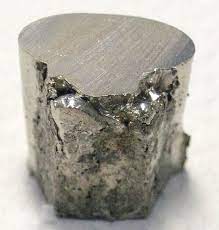Nickel Alloy Coating

Scientists at the International Advanced Research Centre for Powder Metallurgy & New Materials (ARCI), an autonomous Research and Development Centre of the Department of Science and Technology (DST), Govt. of India, have developed a lab-scale process to deposit novel nanostructured Nickel alloy coatings.
- A new method of deposition of Nickel alloy coatings on high-performance materials in engineering applications can replace environmentally toxic chrome coatings.
- The coatings obtained are also highly corrosion-resistant and useful for the plastic ware industry.
- The process used pulsed current electroplating, which is environmentally benign with high production capacity.
- They have used electric current in the form of pulses of a duration of a few milliseconds for electroplating purposes.
- The process consists of an environment-friendly electrolyte consisting of nickel and tungsten ions that is the source of strengthening elemental tungsten (W) and nickel (Ni).
- The pulsed current is applied between the components to be coated, acting as a cathode and a non-consumable anode.
- The pulsed current effect was used for nano-crystalline coatings wherein high instantaneous current density for a very small duration resulted in a high rate of nucleation.
- The coatings were virtually porosity free, crack free with minimal hydrogen uptake.
- The use of pulsed current resulted in the nano-crystallization of nickel tungsten alloy coatings with high hardness (700-1200 HV) and wear resistance.
- The coatings were extremely corrosion-resistant and could withstand up to 700 hrs of salt spray.
- The coatings can withstand temperatures up to 500°C without thermal softening and can improve the life of die components by at least two times than conventional chrome plating.
Nickel:
- It does not occur freely in nature.
- It is found in association with copper, uranium and other metals.
- It is an important alloying material.




